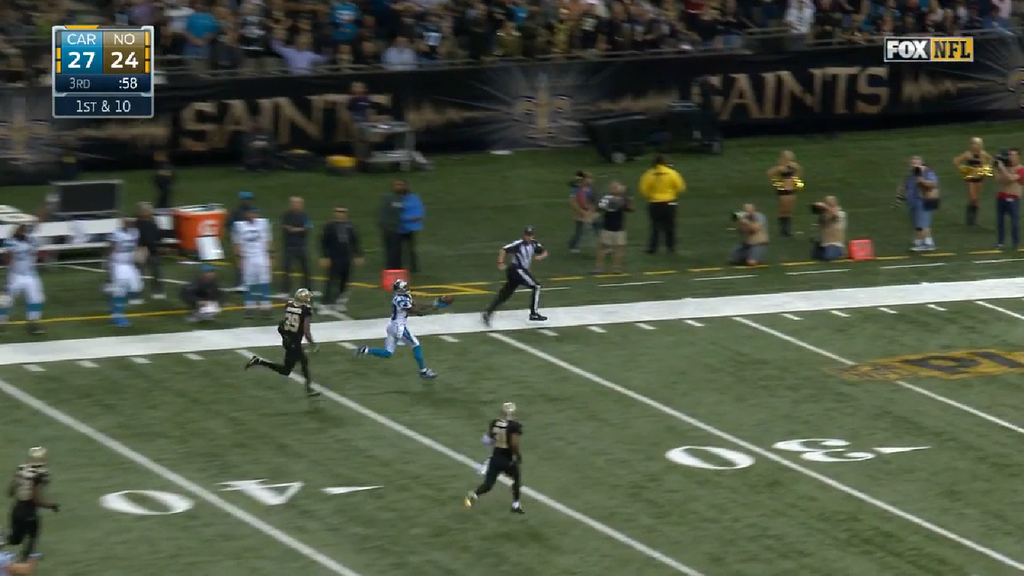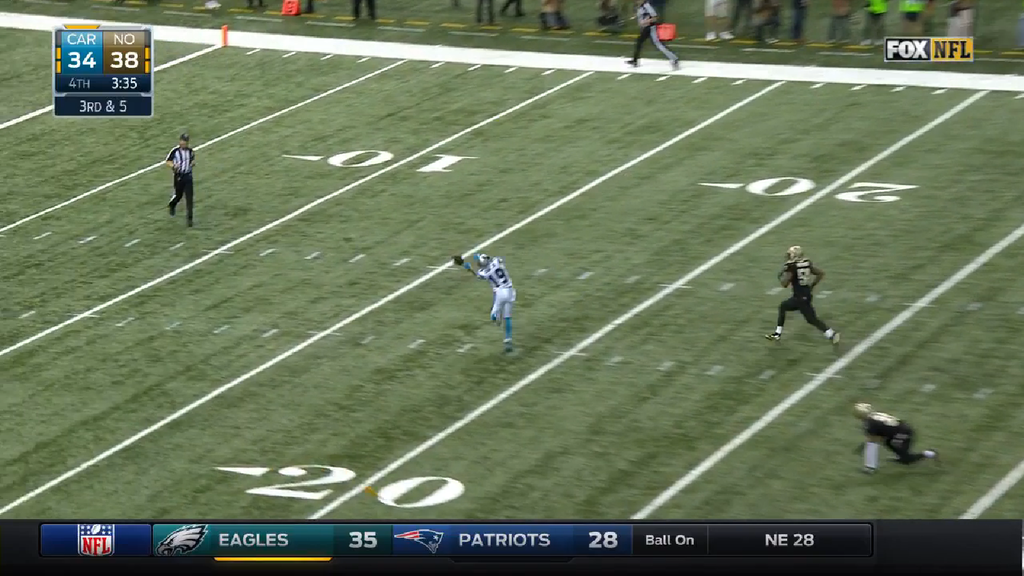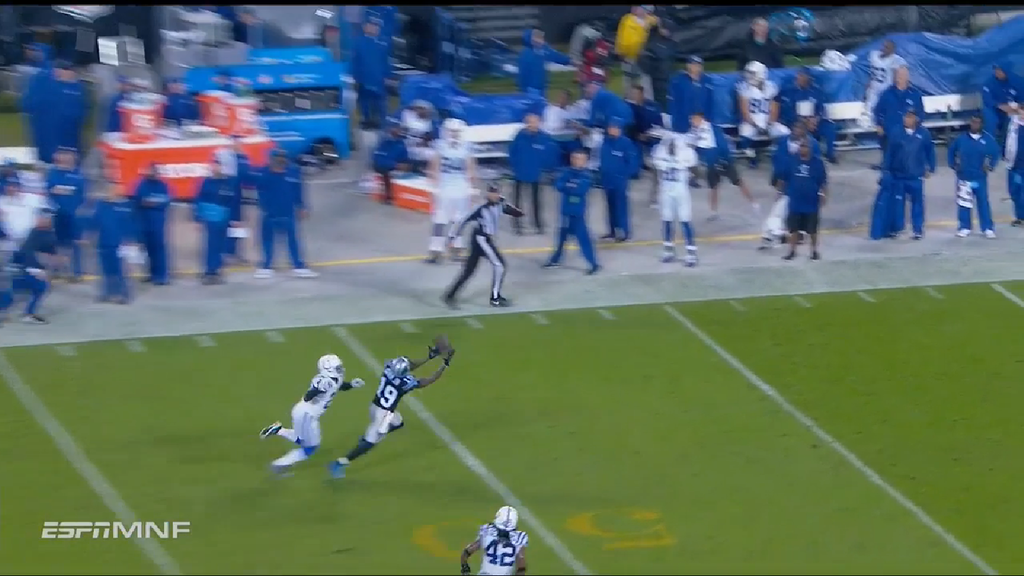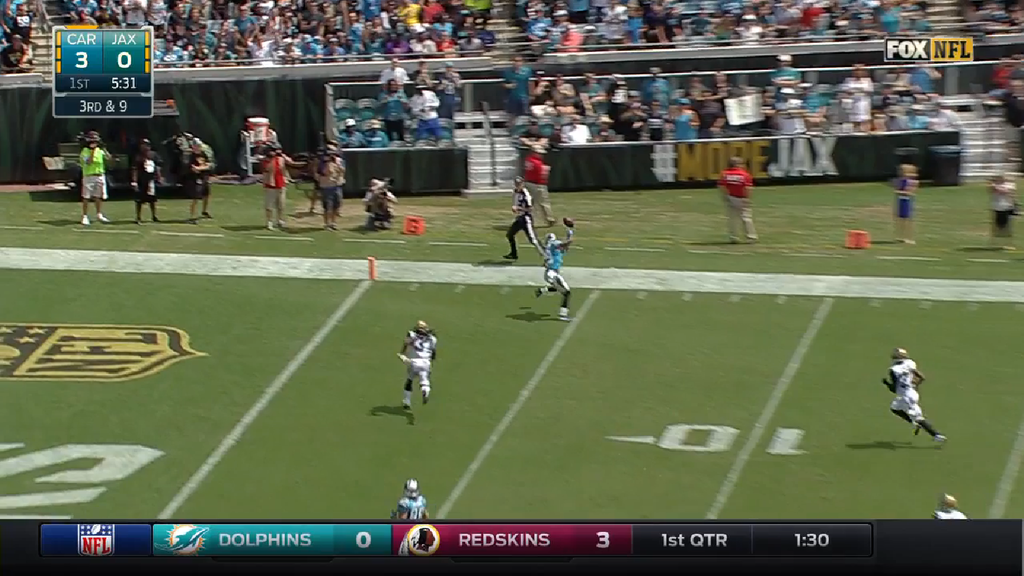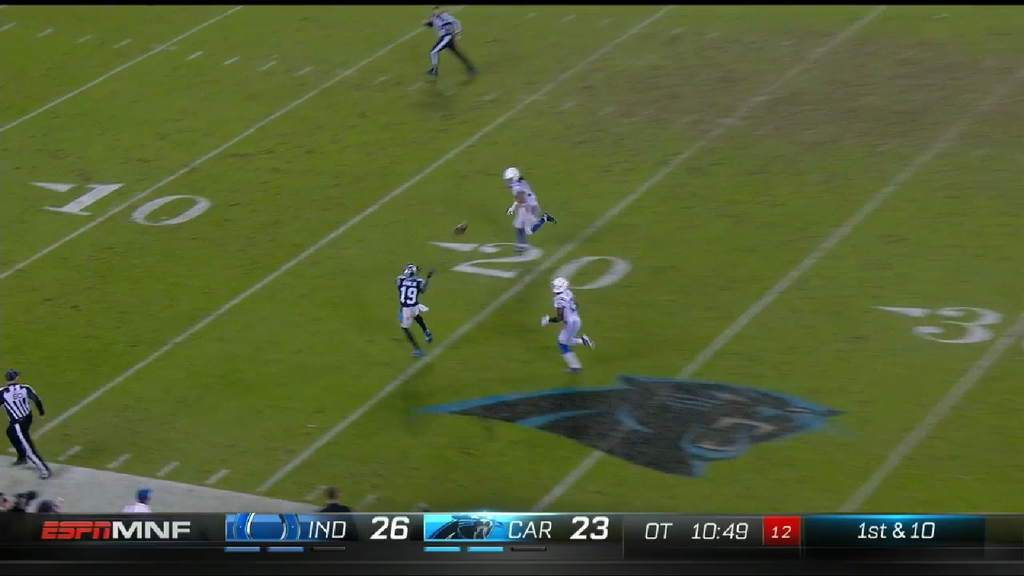- Joined
- Feb 9, 2014
- Messages
- 20,922
- Name
- Peter
http://mmqb.si.com/mmqb/2015/12/16/nfl-ben-roethlisberger-pittsburgh-steelers
The NFL’s Most Physically Gifted Quarterback
Cam Newton has emerged as an MVP candidate. Aaron Rodgers is the guy you’d build a franchise around. Tom Brady is still pushing to become the greatest of all time. Why isn’t anyone talking about Ben Roethlisberger?
by Andy Benoit

Throughout his career, Ben Roethlisberger has been like a Quentin Tarantino movie: everyone knows he’s great, but no one knows exactly why. That remains true this season. Cam Newton has become the media darling. Aaron Rodgers remains the QB people would most want to build around over the next five years. Tom Brady is the resident icon, on his way to possibly being the G.O.A.T.
Roethlisberger has played as well as any of these guys. The Steelers are 6-3 in games that he’s taken the majority of the snaps, and his 332 passing yards per outing lead the league. And remember, he’s playing in an offense that’s lost star running back Le’Veon Bell as well as starters at the two most important positions up front: center (Maurkice Pouncey) and left tackle (Kelvin Beachum).
Yes, others have stepped up. Running back DeAngelo Williams has been fantastic, doing everything Bell does albeit at a slightly less explosive level. Cody Wallace has been steady at center and undrafted 27-year-old Alejandro Villanueva has managed to stay above water at left tackle. Pittsburgh’s pass protection has been among the NFL’s best, particularly in recent weeks.
Effective as the backups-turned-starters have been, the Steelers would not be in playoff contention without Big Ben. Early in his career, Roethlisberger would post sterling numbers—not necessarily on a weekly basis, but fairly often. When he did, it was attributed to his unparalleled knack for extending plays. We’ve all seen him shed would-be sackers, create throwing windows with pump fakes and, like a bull who won’t be corralled, lumber outside the pocket to break down a defense. Roethlisberger has always been dominant if not unstoppable with movement.
But somehow we overlook what happens at the end of that movement: his passes. Roethlisberger is an unbelievable thrower of the football. His arm strength is among the NFL’s very best and so is his precision accuracy. It’s one thing for a quarterback to extend the play. It’s quite another for him to cap it off with a pinpointed deep ball or intermediate strike while under duress. In the early 2000s, Michael Vick was deemed the league’s most athletic quarterback. But it’s Roethlisberger who has always been the most physically gifted man at the position.
Because of Roethlisberger’s brutish style, it was presumed that his talents would begin to diminish by his mid-30s, much like it did for Steve McNair, who played the position in a similar way. Instead, Roethlisberger, at 33, is better than ever. That’s because he’s expanded his game in ways that few believed possible. Over the last five years, in fact, Roethlisberger has improved more than any NFL quarterback. And once again, people are failing to recognize the nuances of his greatness.
View: https://www.youtube.com/watch?v=-F1kKVZp-hE
When offensive coordinator Todd Haley joined the Steelers in 2012, he installed a quicker dropback system with the idea of protecting Roethlisberger from himself. The 240-pound QB wouldn’t suffer so many hits if he threw the ball at the top of a three-step drop. Roethlisberger had played in sharply crafted systems before, but had never been firmly held to the structure of pocket timing. Operating under such rigidity surely felt foreign.
Not surprisingly, there were growing pains. Roethlisberger and Haley are both regarded as alpha males whose personalities can sometimes be like wrecking balls. The two initially had an uncomfortable feeling-out period, but that’s changed thanks to their on-field success.
“He’s as competitive of a guy as there is. I’m the same way,” Haley told the Pittsburgh Post-Gazette’s Ron Cook earlier this month. “I think we’re similar personalities. When I meet new people, I don’t let many in right out of the gate. It wasn’t going to happen overnight.”
In that same article Roethlisberger said, “I think that we’re understanding each other. We’re understanding what each other is thinking.”
Coverage of the improved coach-quarterback relationship has been scarce, not because the topic is invalid but because, well, harmony is less interesting than strife.
It helps that Haley’s approach has worked better than expected. Not only has Roethlisberger taken less pounding, he’s maintained his sandlot playmaking prowess without having to be reliant on it. He’s become one of the best field generals in football. He even handles much of the play-calling in two-minute situations; the Steelers lead the league with 82 total points in such scenarios.
Roethlisberger now has the acumen to consistently identify coverages and pressure concepts before the snap, whereas before he would often diagnose the defense after the snap. A big aid has been the amount of spread formations called by Haley. Coverage and blitz disguises aren’t available when defenders are forced to follow receivers out wide, putting more ground between the corners, safeties and linebackers.
The spread formations also emphasize Pittsburgh’s overwhelming speed at wide receiver. Deep balls on longer dropbacks can be available when you have Martavis Bryant, Markus Wheaton, Darrius Heyward-Bey and especially Antonio Brown. And for the purposes of Pittsburgh’s down-to-down offense, even more significant is the fact that the receiver’s speed (how long it takes to get from A to B) is blended with quickness (how fast you move around within those two points while, for example, trying to shake a defender.)
This is one of the key distinctions between Bryant and previous deep threat Mike Wallace. Besides being lethal on screens and end-arounds, all of Pittsburgh’s wideouts can reach the sticks on three-step-timing throws, presenting the option of post and seam patterns in any circumstance.
A great illustration of this threat mixed with Roethlisberger’s newfound proficiency came in Week 3 on consecutive deep-slant completions to Brown.








Though he’s not mobile in the traditional sense, Roethlisberger embodies what every offensive coordinator wants from athletic, run-oriented quarterbacks. The age-old debate is how often you let a mobile QB rely on his legs versus having him play in the pocket. Fans, analysts and other outsiders tend to say you should let the quarterback run, lest you hinder his greatest strength. Coaches often argue that pocket passing is essential.
What outsiders overlook is that when you teach a QB to play in the pocket, you’re not taking away the strength of his running; you’re simply adding strengths to his passing. A quarterback won’t forget how to leave the pocket and improvise just because he’s asked to play more within structure.
Roethlisberger remains as good as anyone at making something happen when a play breaks down. But he’s also as good as anyone at preventing plays from breaking down. It’s this unexpected quarterbacking maturity that makes Pittsburgh the biggest threat to the Patriots in the AFC.
The NFL’s Most Physically Gifted Quarterback
Cam Newton has emerged as an MVP candidate. Aaron Rodgers is the guy you’d build a franchise around. Tom Brady is still pushing to become the greatest of all time. Why isn’t anyone talking about Ben Roethlisberger?
by Andy Benoit

Throughout his career, Ben Roethlisberger has been like a Quentin Tarantino movie: everyone knows he’s great, but no one knows exactly why. That remains true this season. Cam Newton has become the media darling. Aaron Rodgers remains the QB people would most want to build around over the next five years. Tom Brady is the resident icon, on his way to possibly being the G.O.A.T.
Roethlisberger has played as well as any of these guys. The Steelers are 6-3 in games that he’s taken the majority of the snaps, and his 332 passing yards per outing lead the league. And remember, he’s playing in an offense that’s lost star running back Le’Veon Bell as well as starters at the two most important positions up front: center (Maurkice Pouncey) and left tackle (Kelvin Beachum).
Yes, others have stepped up. Running back DeAngelo Williams has been fantastic, doing everything Bell does albeit at a slightly less explosive level. Cody Wallace has been steady at center and undrafted 27-year-old Alejandro Villanueva has managed to stay above water at left tackle. Pittsburgh’s pass protection has been among the NFL’s best, particularly in recent weeks.
Effective as the backups-turned-starters have been, the Steelers would not be in playoff contention without Big Ben. Early in his career, Roethlisberger would post sterling numbers—not necessarily on a weekly basis, but fairly often. When he did, it was attributed to his unparalleled knack for extending plays. We’ve all seen him shed would-be sackers, create throwing windows with pump fakes and, like a bull who won’t be corralled, lumber outside the pocket to break down a defense. Roethlisberger has always been dominant if not unstoppable with movement.
But somehow we overlook what happens at the end of that movement: his passes. Roethlisberger is an unbelievable thrower of the football. His arm strength is among the NFL’s very best and so is his precision accuracy. It’s one thing for a quarterback to extend the play. It’s quite another for him to cap it off with a pinpointed deep ball or intermediate strike while under duress. In the early 2000s, Michael Vick was deemed the league’s most athletic quarterback. But it’s Roethlisberger who has always been the most physically gifted man at the position.
Because of Roethlisberger’s brutish style, it was presumed that his talents would begin to diminish by his mid-30s, much like it did for Steve McNair, who played the position in a similar way. Instead, Roethlisberger, at 33, is better than ever. That’s because he’s expanded his game in ways that few believed possible. Over the last five years, in fact, Roethlisberger has improved more than any NFL quarterback. And once again, people are failing to recognize the nuances of his greatness.
View: https://www.youtube.com/watch?v=-F1kKVZp-hE
When offensive coordinator Todd Haley joined the Steelers in 2012, he installed a quicker dropback system with the idea of protecting Roethlisberger from himself. The 240-pound QB wouldn’t suffer so many hits if he threw the ball at the top of a three-step drop. Roethlisberger had played in sharply crafted systems before, but had never been firmly held to the structure of pocket timing. Operating under such rigidity surely felt foreign.
Not surprisingly, there were growing pains. Roethlisberger and Haley are both regarded as alpha males whose personalities can sometimes be like wrecking balls. The two initially had an uncomfortable feeling-out period, but that’s changed thanks to their on-field success.
“He’s as competitive of a guy as there is. I’m the same way,” Haley told the Pittsburgh Post-Gazette’s Ron Cook earlier this month. “I think we’re similar personalities. When I meet new people, I don’t let many in right out of the gate. It wasn’t going to happen overnight.”
In that same article Roethlisberger said, “I think that we’re understanding each other. We’re understanding what each other is thinking.”
Coverage of the improved coach-quarterback relationship has been scarce, not because the topic is invalid but because, well, harmony is less interesting than strife.
It helps that Haley’s approach has worked better than expected. Not only has Roethlisberger taken less pounding, he’s maintained his sandlot playmaking prowess without having to be reliant on it. He’s become one of the best field generals in football. He even handles much of the play-calling in two-minute situations; the Steelers lead the league with 82 total points in such scenarios.
Roethlisberger now has the acumen to consistently identify coverages and pressure concepts before the snap, whereas before he would often diagnose the defense after the snap. A big aid has been the amount of spread formations called by Haley. Coverage and blitz disguises aren’t available when defenders are forced to follow receivers out wide, putting more ground between the corners, safeties and linebackers.
The spread formations also emphasize Pittsburgh’s overwhelming speed at wide receiver. Deep balls on longer dropbacks can be available when you have Martavis Bryant, Markus Wheaton, Darrius Heyward-Bey and especially Antonio Brown. And for the purposes of Pittsburgh’s down-to-down offense, even more significant is the fact that the receiver’s speed (how long it takes to get from A to B) is blended with quickness (how fast you move around within those two points while, for example, trying to shake a defender.)
This is one of the key distinctions between Bryant and previous deep threat Mike Wallace. Besides being lethal on screens and end-arounds, all of Pittsburgh’s wideouts can reach the sticks on three-step-timing throws, presenting the option of post and seam patterns in any circumstance.
A great illustration of this threat mixed with Roethlisberger’s newfound proficiency came in Week 3 on consecutive deep-slant completions to Brown.








Though he’s not mobile in the traditional sense, Roethlisberger embodies what every offensive coordinator wants from athletic, run-oriented quarterbacks. The age-old debate is how often you let a mobile QB rely on his legs versus having him play in the pocket. Fans, analysts and other outsiders tend to say you should let the quarterback run, lest you hinder his greatest strength. Coaches often argue that pocket passing is essential.
What outsiders overlook is that when you teach a QB to play in the pocket, you’re not taking away the strength of his running; you’re simply adding strengths to his passing. A quarterback won’t forget how to leave the pocket and improvise just because he’s asked to play more within structure.
Roethlisberger remains as good as anyone at making something happen when a play breaks down. But he’s also as good as anyone at preventing plays from breaking down. It’s this unexpected quarterbacking maturity that makes Pittsburgh the biggest threat to the Patriots in the AFC.


